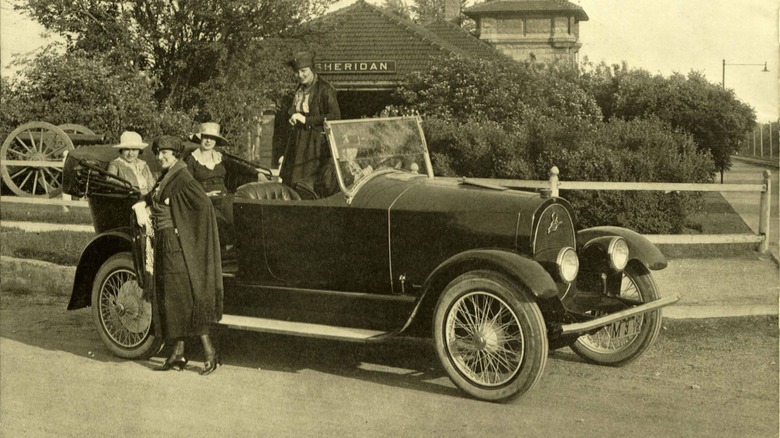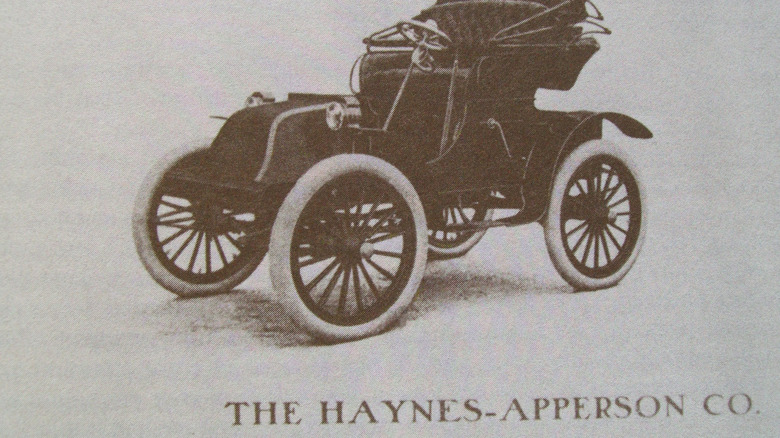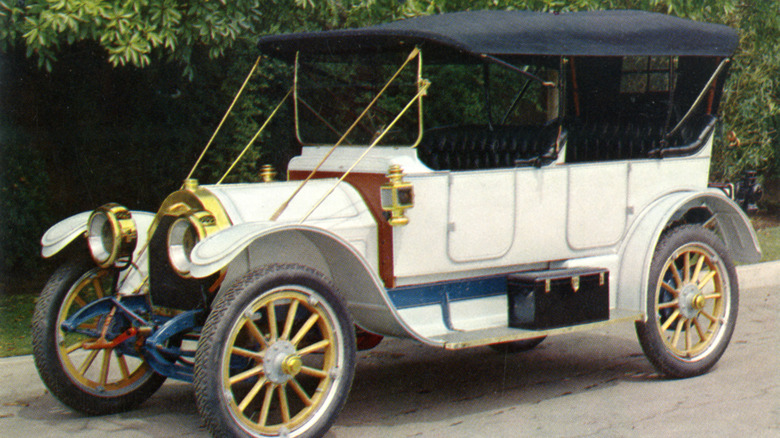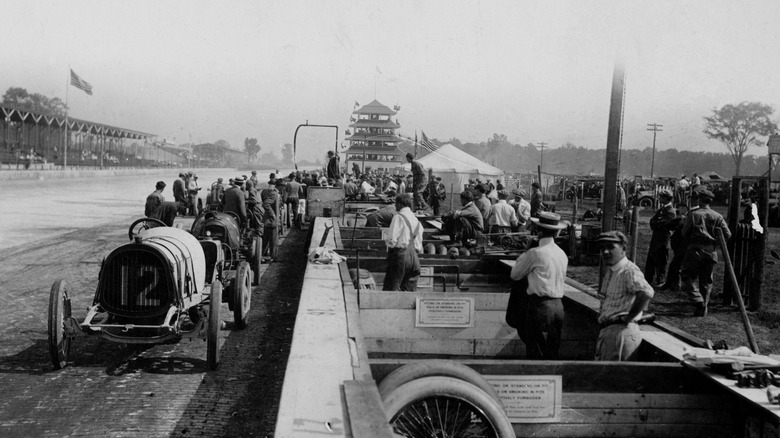Whatever Happened To Apperson Brothers Automobile Company?
When you think of the machines that truly sparked the automotive revolution, classic vehicles like the Ford Model T probably come to mind before anything else. However, while vehicles like the Model T helped to make the automobile more consumer-ready, it wasn't the only motor-carriage on the street. You can't start an entire industry with one company, and it was thanks to the efforts of Ford and a myriad of other companies that we have the auto-powered world of today.
One of those companies was the Apperson Brothers Automobile Company. While Apperson didn't persist into the future like its contemporaries, its overall impact on the automotive industry, particularly the performance vehicle sector, enshrines it in the greater history of automotive development. It's thanks in large part to Apperson's developments that we have some of our flashiest, most powerful vehicles, both for cruising the highways in style and screaming around professional race tracks.
A partnership, then opportunity
Before it was an automotive company, Apperson started as a humble machine shop in Indiana, run by the brothers Elmer and Edgar Apperson. This original machine shop, Riverside Machine Works, focused primarily on repairs on farm vehicles, bicycles, wagons, and other humble means of conveyance.
In 1893, the Apperson brothers were approached by Elwood Haynes, who presented them with a cutting-edge idea for an engine-powered 4-wheeler. Haynes developed the power plant, while the brothers contributed the steering and braking systems. A year later, the Haynes Pioneer was born, and for the next several years, Haynes-Apperson automobiles were the hottest ticket on the market. However, the brothers were dissatisfied with Haynes getting equal billing when they were doing all the hard work, and so they ended their partnership with him in 1901. Immediately after, the Appersons went into business for themselves, forming the Apperson Brothers Automobile Company.
It was a comparatively small operation, even compared to Haynes' company, which operated in the same city in Indiana. What Apperson lacked in quantity, however, it made up for in quality, billing its cars as luxury products and only producing around 1,000 units a year.
The Apperson Jack Rabbit
The original Apperson cars were some of the first commercially-available sports cars. To clarify, these were sports cars not by the modern definition — for example, high-spec consumer vehicles like the Lamborghini Veneno or Ford GT — but cars literally designed for sporting events. As automobiles were proliferating around the United States and beyond, racing was the big craze at the time, and the Apperson brothers knew they wanted in on the action.
The major Apperson claim to fame came about in 1904, when the company produced a next-generation speedster for Motor Age Cup competitor Jack Frye. This vehicle, nicknamed the Jack Rabbit, was both remarkably lightweight thanks to its nickel steel composition and equipped with a peppy 4-cylinder, 491-cubic-in. engine. With a consistent output of 60 hp and 75 mph, the Jack Rabbit could handle just about any kind of race track at a consistently fast clip, making it the one to beat in the racing scene.
Throughout the early 1900s, the Jack Rabbit regularly made headlines in racing publications around the United States. The vehicle was so popular, Apperson began offering street-legal versions with the necessary adjustments, including fenders and headlights. Of course, these were still luxury vehicles whether on or off the track, costing a cool $5,000 a pop. That's about $170,000 in today's dollars.
The end of the road
While other models were offered, the Jack Rabbit was the face of the Apperson Brothers Automobile Company well into the 1910s. Both of the Apperson brothers were all-in on the racing craze, going so far as to enter their latest Jack Rabbit into the very first Indianapolis 500 race in 1911. Both brothers were in the pit with the crew during the race, helping out when the competing Jack Rabbit pulled in for maintenance. While they were working, another car slid off the track and careened into the Jack Rabbit in the pit, causing one of the event's first severe crash-ups. Several pit workers were injured, but luckily, there were no fatalities. Even so, the brush with death was too intense for the Apperson brothers, who ended the company's racing pursuits immediately afterward.
Without the push from the racing scene, the Apperson sports cars began to fall behind the pack during the back half of the 1910s, with models from other companies picking up the slack. The company was already on its last legs, but with the untimely passing of Elmer Apperson in 1920, Edgar Apperson lost his passion for the automotive industry. The company went bankrupt in 1926, with Edgar quietly retiring to the woods of Wyoming.
While the company's end was sudden and unfortunate, it's still a fact that it elevated the art of sports cars significantly during its heyday, paving the way for the mighty vehicles we know and love today.



